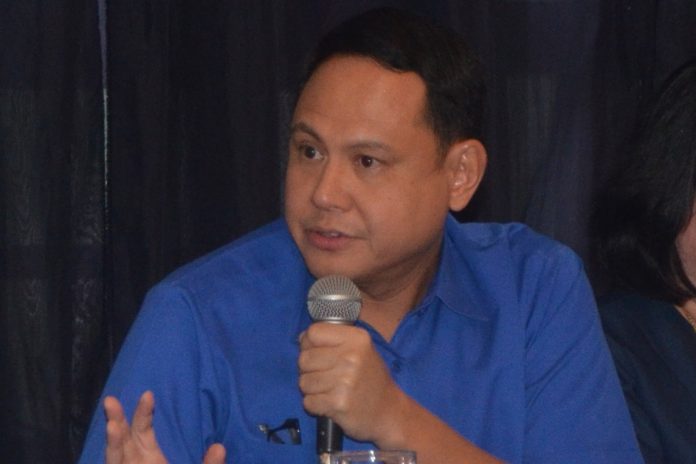
ILOILO – Following the severe flooding in the northern part of this province wrought by typhoon “Ursula”, Gov. Arthur Defensor Jr. called for a reassessment of Iloilo’s hazard map prepared by the Mines and Geosciences Bureau (MGB) in Western Visayas. “The identified hazard areas might have changed already so we need to review,” he said.
MGB’s hazard map identified danger zones – areas vulnerable to flooding and landslide – down to the barangay level.
“Ursula” pummeled northern Iloilo last Dec. 25, 2019 with torrential rains and strong winds. It left vast tracts of lands underwater. Some local government units reported minor landslides.
Defensor said towns in the 5th District which in the past did not suffer severe flooding suddenly had to contend with it.
The way lands were being utilized may have created new danger zones, he said, noting the sprouting of vast cornfields on mountainsides in northern Iloilo.
Perhaps the trees were slowly being cut down and replaced by corn, according to Defensor.
“We now have lots of corn plantations in the mountains of the District. It wasn’t that way before. I don’t know kung ano ang growth rate sina through the years pero I’m sure it does not happen in a month or a year,” he said.
Bodies of water like streams in the northern part of the province should also be included in the review of the hazard map, Defensor added.
Balasan was one of the northern towns that suffered severe flooding.
“All its 23 barangays naka-experience flooding kag extremely affected ang farming nga amo ang main livelihood sang mga tawo,” said Chinky Diolosa, Municipal Disaster Risk Reduction and Management Office head.
It was the first time Balasan suffered from deep flooding; not even super typhoon “Yolanda” in November 2013 was able to hit Balasan this hard, said Diolosa.
WHAT ARE HAZARD MAPS?
The country’s geohazard maps were the output of the Department of Environment and Natural Resources – MGB National Geohazard Assessment Program.
Under this program, landslide and flood susceptibility assessment of 1,634 cities and municipalities were completed in 2014. Printed copies of the maps were set to be distributed to all local government units (LGUs) in 2016.
Intensive IEC campaigns explaining to the local communities how to use these maps were then conducted by the MGB. Through the use of these maps, communities at risk could better prepare for natural hazards and avoid disaster.
WV GEOHAZARDS
In an interview over government radio station DyLL Radyo Pilipinas Iloilo in June 2018, MGB Region 6 chief geologist Mae Magarzo bared a list of municipalities and cities in Western Visayas highly susceptible to landslides and floods based on geohazards mapping.
For each province, Magarzo named the top 10 municipalities and cities that have the most number of barangays rated as “high” or “very high” in its susceptibility to landslides and floods. She qualified, however, that landslides and floods could also occur in other areas that were not on the top 10 lists if contributing factors, most particularly episodes of heavy rains, were present.
The following municipalities and cities have the most number of areas that are highly susceptible to landslides:
* Iloilo – Leon, Tubungan, Igbaras, Miag-ao, San Joaquin, Maasin, Janiuay, Calinog, Lambunao, and Alimodian
* Aklan – Libacao, Madalag, Malinao, Ibajay, Tangalan, Nabas, Malay, Buruanga, Balete, and Makato
* Antique – Valderrama, Laua-an, Barbaza, San Remigio, Patnongon, Bugasong, Tibiao, Culasi, Sebaste, and Pandan
* Capiz – Tapaz, Jamindan, Maayon, President Roxas, Pilar, Dumarao, Ivisan, Roxas City, Dumalag, and Pontevedra
* Guimaras – Jordan, San Lorenzo, Buenavista, Sibunag, and Nueva Valencia
* Negros Occidental – Cadiz City, Talisay City, Silay City, Murcia, Escalante City, Don Salvador Benedicto, Himamaylan City, Binalbagan, and La Carlota City.
Most susceptible to floods were the following municipalities and cities:
* Iloilo – Zarraga, Pavia, Dumangas, Leganes, Barotac Nuevo, Pototan, Dingle, San Enrique, Passi City, and Calinog
* Aklan – Kalibo, Numancia, New Washington, Malinao, Banga, Lezo, Madalag, Libacao, Altavas, and Balete
* Antique – Barbaza, Sibalom, San Remigio, Valderrama, Patnongon, Laua-an, Bugasong, San Jose, Tibiao, and Culasi
* Capiz – Dao, Mambusao, Sigma, Sapi-an, Panit-an, Cuartero, Dumalag, Pan-ay, Pontevedra, and Roxas City
* Guimaras – Sibunag, Nueva Valencia, Buenavista, San Lorenzon, and Jordan
* Negros Occidental – Bago City, Pulupandan, Valladolid, San Enrique, Pontevedra, Cadiz City, Sagay City, Escalante City, and E.B. Magallona
Magarzo said natural factors contribute to landslides such as steep slopes, weak rock characteristics, loose thick soil and poor vegetation.
They are also triggered by rain which saturates and loosens rock and soil, or by ground movement caused by an earthquake./PN



